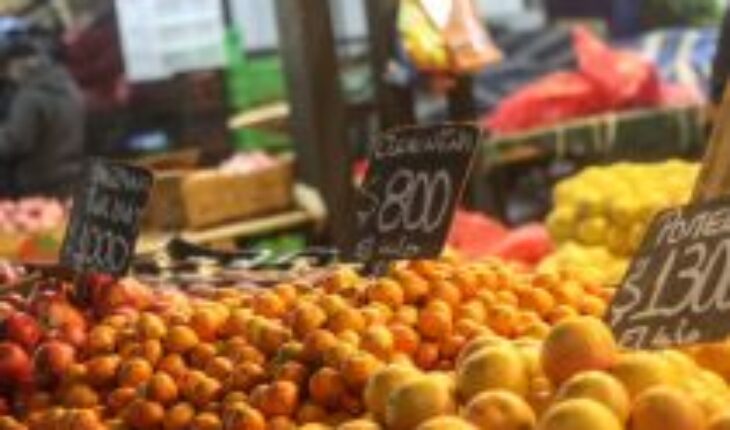The National Institute of Statistics (INE) reported on Wednesday morning that the Consumer Price Index (CPI) for February presented a monthly variation of -0.1%. This is the first monthly decline of the indicator in more than two years, since November 2020.
The INE also reported that the CPI accumulated an increase of 0.7% in the second month of the year and stood at 11.9% year-on-year.
Three of the 12 divisions that make up the CPI basket contributed negative incidences in the monthly variation of the index, seven had a positive impact and two scored no incidence.
The divisions with decreases in their prices were transport (-2.7%), with -0.396 percentage points (pp.); food and non-alcoholic beverages (-0.3%), with -0.064 pp., and recreation and culture (-1.0%), with -0.064 pp.
Divisions
Transportation posted monthly decreases in five of its 10 classes. The most important was passenger transport by air (-27.9%) which affected -0.338 pp., while fuels and lubricants for personal transport vehicles (-3.2%) contributed -0.127pp.
Of the 24 products that make up the division, eight presented decreases in their prices, being the most relevant air transport service (-27.9%), with an incidence of -0.338 pp., followed by gasoline (-3.1%), with -0.106 pp. The remaining products with negative incidences accumulated -0.052 pp.
Food and non-alcoholic beverages
Food and non-alcoholic beverages posted monthly declines in four of its 11 classes. The most important was meat (-1.3%) which contributed -0.071 pp., followed by fruits (-5.7%), with -0.070 pp.
Of the 76 products that make up the division, 31 recorded decreases in their prices, highlighting chicken meat (-3.6%), with an incidence of -0.042 pp., followed by soft drink (-3.6%), with -0.041 pp. The remaining products with negative contributions accumulated -0.190 pp.
Clothing and footwear
Apparel and footwear recorded monthly increases in its five classes. The most important was clothing (4.4%) which contributed 0.065 pp., followed by shoes and other footwear (3.9%), with 0.043 pp.
Of the 28 products that make up the division, 27 recorded increases in their prices, highlighting women’s shoes (10.9%), with an incidence of 0.018 pp., and uniform and school sportswear (4.1%), with 0.017 pp. The remaining products with positive contributions accumulated 0.077 pp.
📩 To learn more about the intersection between money, power and characters, join the newsletter community El Mostrador Semanal 👉🏼 Sign up for the free version HERE.
Follow us on





![translated from Spanish: [VIDEO] Erick Pulgar scored free-kick goal in Fiorentina’s loss to AC Milan translated from Spanish: [VIDEO] Erick Pulgar scored free-kick goal in Fiorentina’s loss to AC Milan](https://ananoticias.com/wp-content/uploads/2021/03/translated-from-Spanish-VIDEO-Erick-Pulgar-scored-free-kick-goal-in-370x215.jpg)